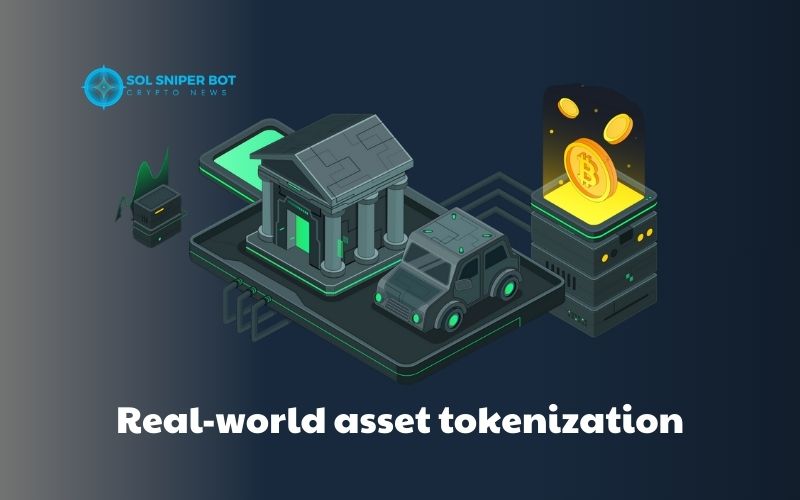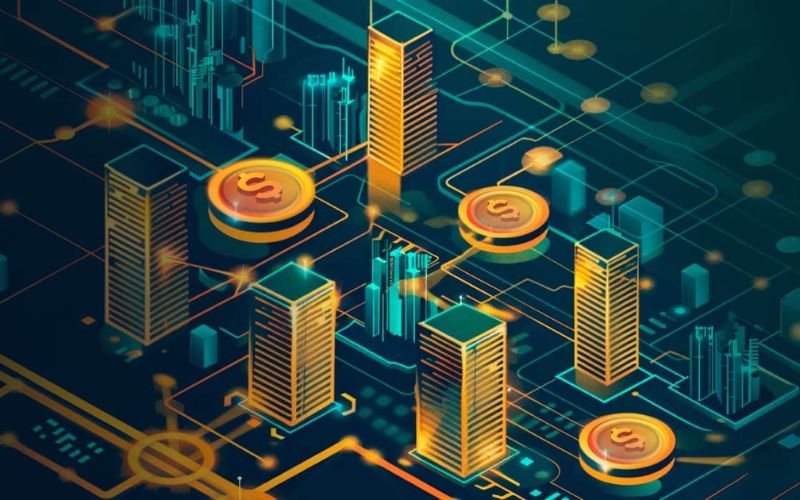As blockchain technology continues to evolve, real-world asset tokenization is emerging as a game changing trend in the financial sector. By turning tangible assets like real estate, commodities, and fine art into digital tokens, this innovation is unlocking unprecedented levels of liquidity and accessibility. In this article, we explore how asset tokenization is shaping the future of investment and why savvy investors are paying close attention to this rapidly growing market.
Contents
What is real-world asset tokenization?
Real-world asset tokenization is the process of converting ownership rights of physical assets such as real estate, gold, bonds, or artworks into digital tokens on a blockchain. These tokens represent fractional ownership or value of the original asset, allowing users to trade or transfer them seamlessly in a decentralized environment. By integrating blockchain technology, tokenization enhances transparency, traceability, and reduces the need for intermediaries. This process not only simplifies asset management but also increases global accessibility to traditionally illiquid investments. As a result, investors can participate in markets that were once limited by geography, regulation, or capital thresholds.

Tokenized assets are secured by smart contracts, ensuring that ownership records and transactions are immutable and verifiable. For example, instead of needing millions to buy a property, an investor can now purchase a token worth a fraction of the real estate’s value. This democratizes access to high value assets and opens up new avenues for portfolio diversification. Additionally, tokenized assets can be traded 24/7 across global platforms, improving liquidity and market efficiency. In essence, real-world asset tokenization bridges the gap between traditional finance and the digital economy. Its potential impact reaches far beyond crypto, reshaping the way assets are owned and exchanged.
Key benefits of real-world asset tokenization
Real-world asset tokenization enhances liquidity for traditionally illiquid assets such as real estate and fine art. Through digitization, these assets can be fractionalized and traded more easily on blockchain platforms. This opens up flexible and diverse investment opportunities for a broader range of participants. Investors no longer need to purchase an entire asset but can own a small fraction through tokens.
The tokenization process also expands global access to assets, regardless of geographic location or financial capacity. With fractional ownership models, even individual investors can enter markets that were once exclusive to the wealthy. All that’s needed is a digital wallet and internet connection to invest in high-value assets. This marks a significant step toward democratizing the global financial market.
The transparency and security of blockchain provide greater peace of mind for investors in tokenized asset markets. Every transaction is publicly recorded, immutable, and fully traceable at any time. This significantly reduces the risk of fraud, disputes, or asset misappropriation thanks to automated and transparent processes. Additionally, smart contracts ensure rights and benefits are executed accurately and efficiently.
Beyond expanding investment opportunities, asset tokenization also cuts costs and significantly shortens transaction times. By removing intermediaries such as banks, financial institutions, or notaries, operational expenses are reduced. Transactions that once took days can now be completed in minutes, boosting efficiency for investors. This offers an optimized solution for a modern and agile financial ecosystem.
Real-world asset tokenization process
To transform a physical asset into a tradable digital asset, it must go through a well defined real-world asset tokenization process. Below are the basic steps involved in the real-world asset tokenization process.
- Choose the asset: The first step is to identify a suitable physical asset for tokenization, which could be real estate, cars, artwork, or valuable commodities. The chosen asset needs to have a clear value, easy to verify ownership, and the potential to be divided if necessary. Legal factors, valuation, and potential liquidity must also be thoroughly evaluated.
- Design the token: Once the asset is selected, the next step is to design the token that will represent that asset. It is necessary to determine whether the token will be fungible (replaceable) or non-fungible (unique), depending on the asset’s characteristics. Additionally, the appropriate token standard needs to be chosen, such as ERC20 for divisible tokens or ERC721 for unique NFTs. Correctly designing the token ensures it accurately reflects the value and rights of the owner.
- Choose the blockchain: Blockchain is the foundation for the tokenization system, so selecting the right network is crucial. Ethereum is a popular choice due to its strong ecosystem and clear standards, but other platforms such as Hedera, Polygon, or specialized networks may also be considered. The selection criteria typically include transaction costs, processing speed, and long-term scalability.
- Connect off-chain data: Since real-world assets exist outside of the blockchain, a mechanism is needed to authenticate their value and ownership. Oracles act as intermediaries, providing off-chain data to the blockchain in a reliable manner. Information such as asset valuation, legal contracts, or ownership rights will be synchronized via the oracle to ensure accuracy and reliability.
- Issue the token: At this point, the token officially represents the real world asset and can be traded on appropriate platforms. The owner can transfer, sell, or use the token to participate in decentralized finance (DeFi) models. This step completes the process, bringing traditional assets fully into the digital world.
Practical applications of real-world asset tokenization

Tokenizing U.S. government bonds is one of the notable applications of real-world asset tokenization. With a market value exceeding $6.5 billion, of which Ethereum alone accounts for $4.9 billion, U.S. government bonds have become a popular tokenized asset. Converting these bonds into tokens allows investors to trade them more easily and flexibly. This opens up opportunities for global investors to access U.S. government bonds without encountering geographical or legal barriers.
Many large investment funds have recognized the potential of asset tokenization and have started to implement tokenized funds. Major names like BlackRock, Franklin Templeton, and Janus Henderson have entered this field, expanding opportunities for global investors. Tokenization allows these funds to reach a wider base of smaller retail investors, not limited by the initial investment size. Thanks to blockchain technology, transactions become faster and more transparent, improving asset management efficiency. This also creates an easier global investment ecosystem with lower costs and reduced risks.
Decentralized finance (DeFi) is also an important application of real-world asset tokenization, particularly in lending. Clearpool, a DeFi platform, processed loans worth up to $650 million in Q4 2024 through asset tokenization. By converting assets into tokens, Clearpool can directly connect lenders and borrowers without the need for intermediary financial institutions. This helps reduce costs, accelerates transaction speed, and expands access to credit for those not served by traditional financial systems.
Growth potential of real-world asset tokenization
According to forecasts, the total value of tokenized assets could exceed 50 billion USD by the end of 2025, marking a significant milestone in the application of blockchain technology in finance. This growth reflects a shift in how assets are managed and traded, especially traditional assets like real estate and artwork. Real-world asset tokenization helps increase liquidity and accessibility, expanding opportunities for small investors. This model also creates a strong global market where assets can be easily traded without being restricted by geographical or financial barriers.
By the end of this decade, more than 10% of global financial assets could be tokenized, demonstrating the immense potential that blockchain technology brings. This not only expands investment opportunities but also helps make financial markets more transparent and efficient. By eliminating intermediaries and reducing transaction costs, tokenization is creating a new financial model where rights and profits are shared more equitably. This is an important step in democratizing global financial markets, allowing people, regardless of their financial scale, to participate and benefit from these significant opportunities.
At Sol Sniper Bot keeps you updated on the latest trends in the crypto world, the potential of tokenized real-world assets offers an exciting frontier for the future of investing.
